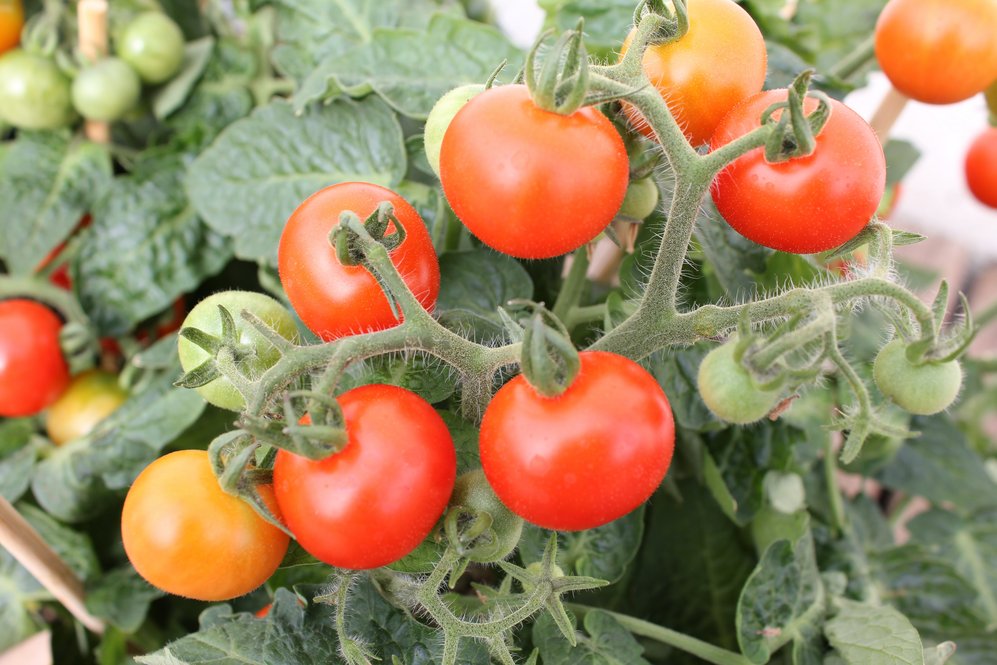Until now, New GMOs are promises, not a market reality. Only three crops in three countries have made it to the market: a herbicide-tolerant oilseed rape grown in the US and Canada, a soybean with an altered fatty acid profile to be used in deep fryers (USA) and a tomato which is supposed to lower blood pressure (Japan).
Rapeseed which encourages herbicide use SU Canola, is a genetically engineered rapeseed variety developed by Cibus. In the US it is sold under Cibus’s Falco brand and has been on the market since 2014, and in Canada since 2018. SU Canola has been developed using a technique that is called oligonucleotide-directed mutagenesis (ODM). It involves the insertion of short sequences of synthetic DNA, so-called oligonucleotides, into the cells. The cells then adapt their own DNA to the artificial templates. According to the GMO panel of the European Food Safety Authority (EFSA), “the amount of information available in the literature in terms of molecular mechanism, technological aspects, applications, and intrinsic limitations of the system … is considered limited”. ODM has so far only been used to “generate GM plants with relatively simple and easily selectable traits, for example herbicide resistance”.
Cibus’s gene-edited canola has only undergone formal regulatory risk assessment in one country - Canada. Health Canada concluded in 2013 that food derived from Cibus SU Canola is “as safe and nutritious as food from current commercial canola varieties”.
By 2018, according to Cibus, SU Canola had "attained an approximately 4% share (measured by acres planted) in the U.S. canola market.” Newer figures are not available. Cibus’ annual revenue is reported $2.69 million.
As with the majority of GMO crops planted today, SU Canola has been engineered to withstand spraying with broad spectrum herbicides, raising the key question as to how environmentally-friendly such plants actually are – allowing, as they do, more chemicals to be sprayed on fields. This is in contradiction to the EU’s Green Deal that is aiming for a 50 percent pesticide reduction by 2030.
An altered-fat soybean oil which has flopped on the market
Calyxt’s High Oleic Soybean Oil, developed using Transcription Activator-Like Effector Nucleases (TALENs), launched on the market in the US in 2019. It is – effectively - a health food product, claiming to contain up to 20% less saturated fatty acids, when compared to other soybean oils and its aimed use is in deep fat fryers in fast food restaurants. At launch, Calyxt reported that it was partnering with 100 farmers in the Upper Midwest region growing over 34,000 acres of Calyxt High Oleic Soybean. However, the soybean is reportedly not proving a great success with farmers who have seen lower crop yields, or with investors. The company appears to have struggled with this product and switched to focus solely on seed production and tech licencing. Calyxt’s revenue in 2021 was $21 million.
Tomato with unclear health consequences
The third product on the market created using New Genomic Techniques is Sanatech Seed’s GABA-enriched tomato, engineered with CRISPR, available only in Japan since 2021. The company claims that the tomato has health benefits, due to higher concentrations of the plant compound GABA (γ-Aminobutyric acid) than can be found in tomatoes grown with conventional breeding. Sanatech’s GABA tomato is claimed to have health benefits including lowering blood pressure. But there are a wide range of health and environmental risks associated with making such significant changes to a plant’s composition. According to Test Biotech, the changes made to the genetic make-up of the tomato may lead to unintended consequences when consumed, effectively turning it into a sedative.
As with the other two products, details of uptake and general success on the market is opaque and it is difficult to find much information about, in the case of Sanatech’s tomato, whether farmers are growing them and consumers are buying them.
New GM products so far – what problems are they actually solving?
So far biotech using new genomic techniques has brought to the market: another herbicide-tolerant, pesticide-use promoting crop; a soybean that is not popular with farmers because of lower yields; and a tomato which offers mere health claims and may have unintended impacts on health and the environment. How can any of these three products be considered as contribution to sustainable agriculture or improving health outcomes?
To the contrary, in addition to the intended changes, gene editing also causes unintended genetic changes to products that have the potential to be allergenic, toxic, with diminished nutritional value and/or harmful to the environment. The long-term health and environmental impacts of GM crops engineered with gene editing are, as yet, untested.
The future for New GMO products?
According to a most recent JRC report on “Current and future market applications of new genomic techniques” (part of the European Commission’s documents in context of its study on new genomic techniques, published in April 2021) 16 New GM plants worldwide are in a precommercial stage, that means they could make it to the market within the next five years. Six out of these 16 are herbicide resistant – made to withstand pesticides - and therefore in contradiction to the European Commission’s Green Deal objectives. Will any of them surpass the so-far non-existent benefits shown by the first three products on the market?
